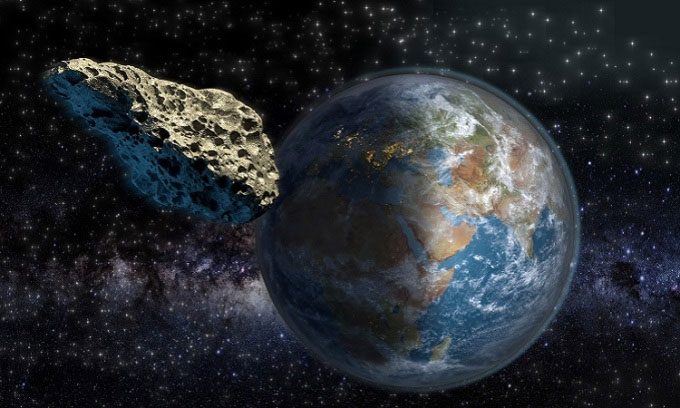The asteroid 2023 EY flew past Earth at a distance of 239,800 km on the evening of March 16, which is 62% of the average distance between Earth and the Moon.

2023 EY is one of the few asteroids that passes closer to Earth than the Moon. (Photo: Knews)
Astronomer Gianluca Masi from the Virtual Telescope Project stated that the close distance of 2023 EY to Earth means that large ground-based telescopes can capture images of the celestial object as it flies by. However, based on its current trajectory, there is no risk of collision with the planet, according to Space.
2023 EY has an estimated diameter of 13 to 29 meters, comparable to the Chelyabinsk meteor (17-20 meters), which flew over the sky of the city of the same name in Russia on the morning of February 15, 2013, creating shockwaves that shattered windows in thousands of buildings and injured 1,500 people. To date, 2023 EY is one of 14 asteroids that pass closer to Earth than the Moon.
The asteroid 2023 EY was first discovered a few days ago, on March 13, through the Asteroid Terrestrial-impact Last Alert System (ATLAS), which is funded by NASA and operated by the University of Hawaii. ATLAS is the first system capable of scanning the entire sky every 24 hours, allowing astronomers to identify and classify near-Earth objects such as asteroids.
The survey system consists of four telescopes that can scan an area of the sky 100 times larger than a full moon, according to NASA. Two telescopes are located in Hawaii, while the other two are in South Africa and Chile. To date, ATLAS has detected 700 near-Earth asteroids.
“We have not found any significant threats from asteroids, but we will continue to search for this group of large celestial objects. Our goal is to predict potential collisions years or even decades in advance to use deflection technologies like DART,” shared Lindley Johnson, a planetary defense expert at NASA headquarters.


















































